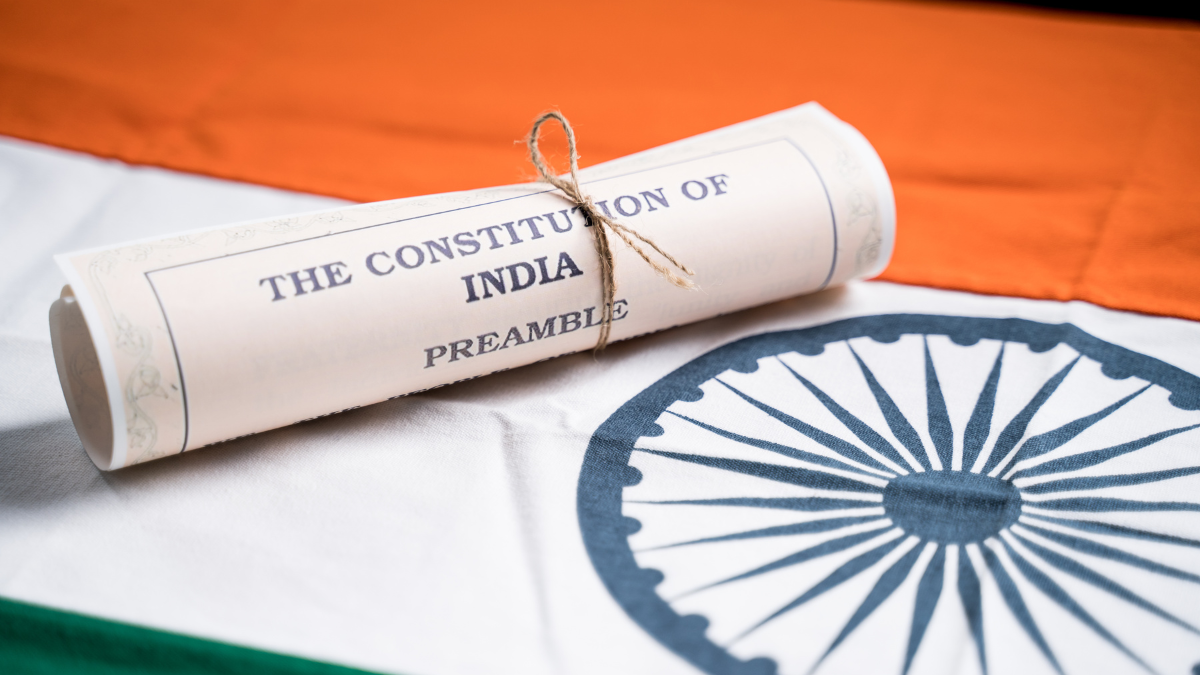History of Constitution: The Constitution of India officially took effect on 26th January 1950, a day now celebrated as Republic Day. Before that, dating back to 26th January 1930, it held significance as Independence Day, marked by people across villages, neighborhoods, towns, and groups taking the independence pledge in the fervent desire for India’s freedom from British rule.
Table of Contents
About History of Constitution
The transition to Republic Day was a natural progression, symbolizing the seamless connection between the hard-fought struggle for independence and the adoption of the Constitution that transformed India into a Republic. The journey of crafting the Constitution had roots that stretched far back, beginning decades prior to 1950 and persisting continuously. It was intricately linked to the fight for independence and the movements advocating for responsible and constitutional governance in the princely states. This process of evolution reflected the enduring spirit of India’s quest for freedom and self-governance.
Developments in the Constitution of India
On the 19th of February in 1946, the British government made a significant move by announcing the dispatch of a Cabinet Mission to India, aiming to address the issues surrounding freedom and constitution-making. After arriving on the 24th of March 1946, the Cabinet Mission engaged in extensive discussions with Indian leaders. Unfortunately, their efforts to reach an agreement fell short, leading to the announcement of their own scheme on 16th May 1946.
Recognizing the value of setting up a constitution-making mechanism through elections based on adult franchise, the Mission acknowledged the potential delays such a step might cause. Consequently, it was decided that the newly-elected legislative assemblies of the provinces would elect members of the Constituent Assembly based on representation proportional to population. Sikh and Muslim legislators were to elect their representatives according to their respective populations.
The Congress responded to this scheme by asserting that, in its perspective, the Constituent Assembly would be sovereign once established. It would have the authority to accept or reject specific proposals from the Cabinet Mission.
The Constituent Assembly was intended to have 389 members, with 296 from British India and 93 from princely states. Initially, it comprised only members from British India, with elections held in July-August 1946. The Congress secured a dominant position, winning 199 out of 210 general category seats, as well as additional seats from Sikh, Muslim, Coorg, Ajmer-Merwara, and Delhi categories. The Muslim League won 73 out of 78 Muslim seats.
The historic journey of independent India commenced on the 9th of December 1946, at 11 a.m., as the Constituent Assembly convened its first session. The significance of that day marked the beginning of a new chapter, where the path to independence was now defined by specific dates.
When the Indian people gathered for the Constituent Assembly, they took on the crucial responsibility of shaping the constitutional framework for their government. This marked a significant transfer of power, emphasizing that only a drastic event like a coup d’etat could reverse this constitutional trajectory. In the first session, 207 members participated, but the Muslim League, unable to prevent the Assembly’s convening, chose not to join.
Despite their absence, the Assembly moved forward, electing Dr. Rajendra Prasad as the permanent Chairman on 11 December, later designated as the President. The third session in April-May 1947 still saw no participation from the League. The turning point came on 3 June with the announcement of the Mountbatten Plan, revealing the impending partition of India. As India gained independence on 15 August 1947, the Constituent Assembly evolved into a sovereign body, serving as both the framers of the Constitution and the legislative force for the new state.
The work was organized into five stages:
- First, committees were asked to present reports on basic issues;
- Second, B.N. Rau, the constitutional adviser, prepared an initial draft on the basis of the reports of the reports of these committees and his own research into the constitutions of other countries;
- Third, the drafting committee, chaired by Dr Ambedkar presented a detailed draft constitution which was published for public discussion and comments;
- Fourth, the draft constitution was discussed and amendments proposed;
- Fifth, and lastly the constitution was adopted.
Read Also: Writ of Mandamus – Legal Reasoning CLAT 2022 Practice Questions




